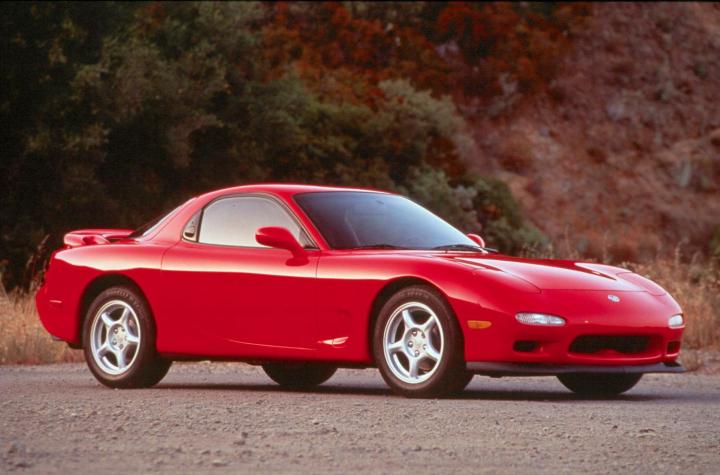
Since the Mazda RX-8 was discontinued in 2011, fans have clamored for a new rotary-powered sports car. A new report suggests Mazda has finally heard their pleas.
There have been rumors of a new RX-8 or two-door RX-7 before but the latest, from Auto Express, puts forth some interesting possibilities.
The magazine claims Mazda will launch a new sports car in 2017 to coincide with the 50th anniversary of the Cosmo – it’s first production car powered by a Wankel rotary engine.
This car is expected to use a lengthened version of the chassis from the new MX-5 Miata (which will debut next year), and could ditch the RX-8’s rear-hinged suicide doors for a two-door body style that recalls the good ‘ole RX-7, which was more of a pure sports car.
Thanks to their ability to produce impressive power from relatively little displacement, and rev like there’s no tomorrow, rotary engines made the RX-7 and and RX-8 legendary. They also won Mazda a victory at the 24 Hours of Le Mans in 1994.
However, these engines have always been hampered by high oil consumption and poor fuel economy.
Since the last RX-8 left showrooms, Mazda developed its “Skyactiv” line of efficient piston engines. It’s suggested that lessons learned from this effort could be applied to a new rotary engine.
Mazda is reportedly targeting an output of 300 horsepower for the new engine, which could be pretty entertaining if engineers manage to keep the new RX-7’s weight down.
Hints of a new RX-7 are further proof that, like fashion, automotive trends run in cycles.
If it really does arrive in 2017, the new RX-7 could find itself competing against a raft of other reincarnated Japanese sports cars, including successors to the Mitsubishi 3000GT, Subaru SVX, and Toyota Supra. It’s the Nineties all over again.


